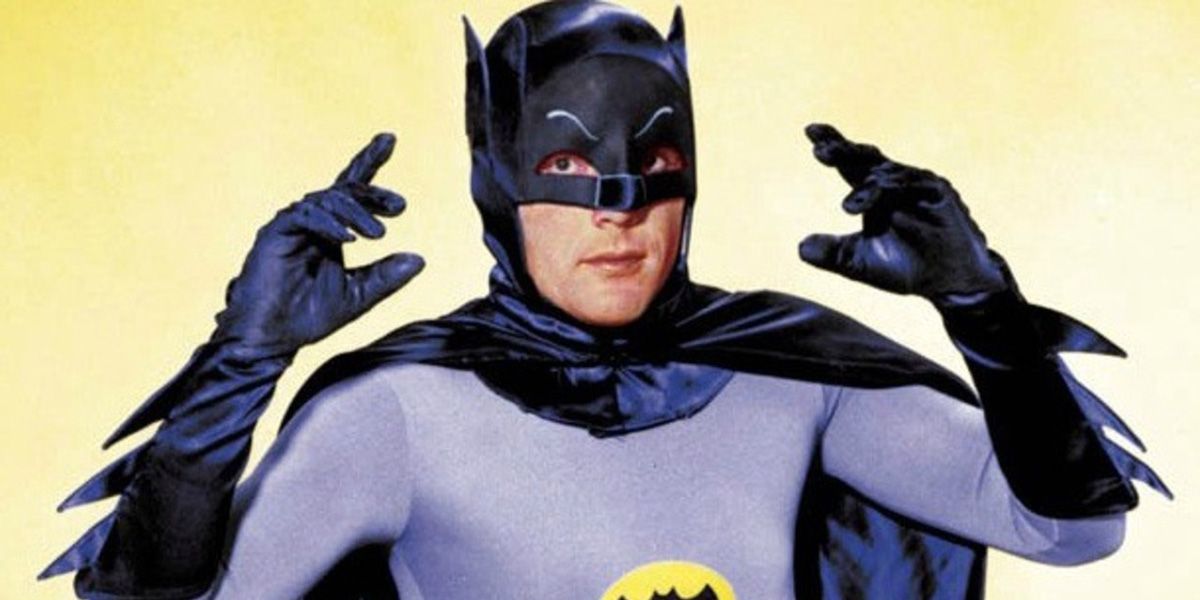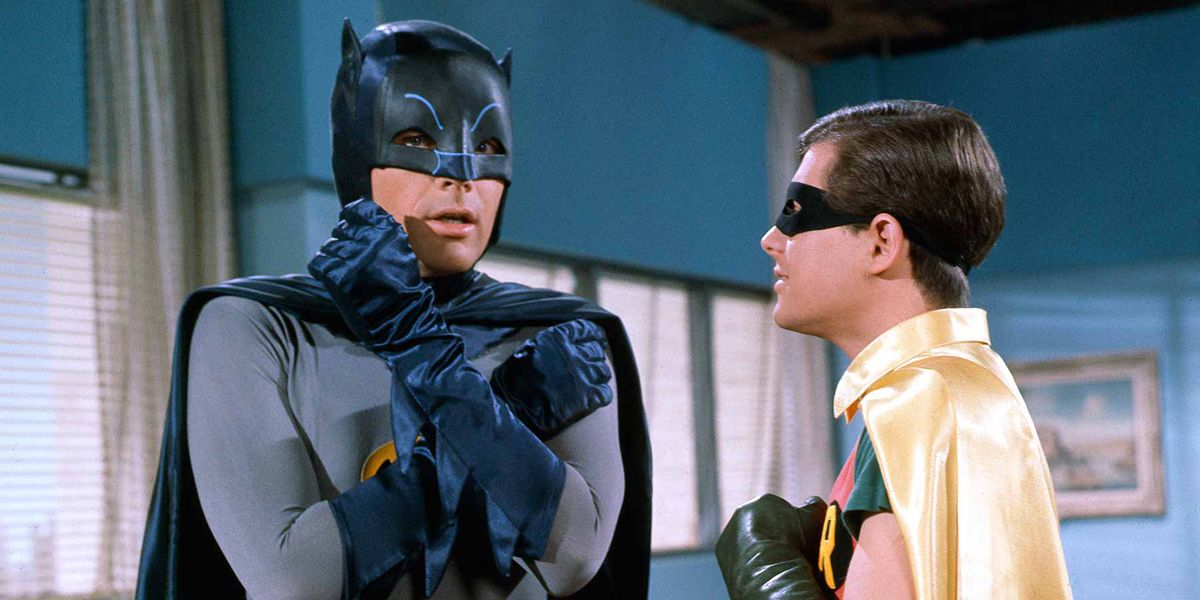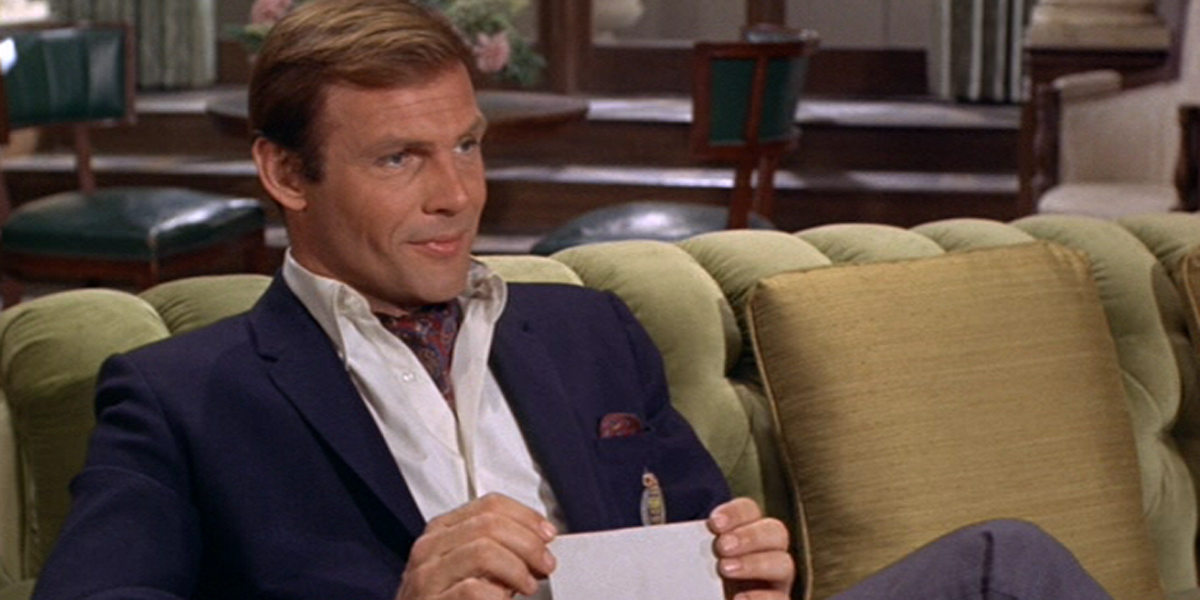For generations of fans, Adam West was Batman. That's no slight to the many actors who followed him, across animation, video games and live-action; it's a simple fact.
The actor, who passed away Friday night at age 88, was my Batman, not because of the now-classic 1966 television series -- that was before my time -- but because of the Saturday-morning cartoon that arrived more than a decade later. Produced by Filmation, The New Adventures of Batman reunited West with former co-star Burt Ward, establishing early on how difficult it would be for the two actors to flee the grip of Gotham City.
RELATED: Adam West, Iconic Batman Actor, Dies at Age 88
It wasn't until sometime later, while visiting my cousins' house one weekday afternoon, that I discovered the 1966 show in reruns, and -- like million of others -- was immediately captivated. Even as a child I recognized the silliness of Batman ("campiness" hadn't yet entered my still-forming vocabulary); I'd already seen the Caped Crusader kill a vampire in a stray issue of Detective Comics, and leap into action in Super Friends, so I recognized what I was watching was an anomaly. Still, it was undeniably magical, from composer Neal Hefti's inescapable theme and the urgency of creator William Dozier's narration to the pop-art visuals and the parade of colorful villains.
But most of all, the appeal of Batman was in the earnestness of West, whose performance was serious but still self-aware, the sly, knowing calm at the center of a whirlwind that could spin out of control at any moment.
"Bill Dozier and I had some early discussions about how the character should be played," West recalled in his 1994 autobiography Back to the Batcave, "and the only real disagreement we had was over Batman's speech pattern. Lorenzo [Semple Jr., the developer and chief writer] had sent a memo to Bill from Spain stating that Batman's delivery should be staccato, wooden, and straight ahead like Sgt. Joe Friday in Dragnet. I strongly disagreed. I felt that Batman would be wooden enough in his suit, virtually expressionless behind the mask. I told Bill that Batman should muse and connect his ideas and sentences fluidly, similar to the way Basil Rathbone did as Sherlock Holmes, only a bit less tightly wound."
RELATED: Jingle Bells, Batman Smells: The History of a Children's Classic
That led to a speaking style that's every bit as distinctive, and almost as frequently imitated, as William Shatner's. And while actor Olan Soule may have voiced the Caped Crusader in more projects over the next couple of decades, from 1968's The Batman/Superman Hour to 1984's Super Friends: The Legendary Super Powers Show, it's West's that became most associated with the character, at least until Tim Burton's 1989 film. The gravely voices of the Batman played by Michael Keaton, Christian Bale and Ben Affleck are a drastic departure from the almost-melodic tones of West's Bruce Wayne, who apparently thought an ill-fitting cowl and a winning smile were enough to keep his identity under wraps.
West's early career consisted largely of guest roles on TV Westerns and crime dramas, dominant genres of the era. However, it was West's performance as Captain Q, a James Bond-like spy, in a Nestlé Quik commercial that caught Dozier's eye, and made him forget about the likes of Ty Hardin and Lyle Waggoner (who years later was cast as Steve Trevor on Wonder Woman).
But by the time Batman premiered on Jan. 12, 1966, West's turns as Captain Q and Doc Holliday would be all but forgotten. That night, 52 percent of American televisions were tuned in to ABC, something that's virtually impossible to imagine today. It was an immediate sensation, launching its own merchandising industry that generated an estimated $80 million in retail sales (about $597 million in today’s dollars) that year, eclipsing other pop-culture icons of the era, including James Bond. Alas, however, a star that shines so intensely is all but doomed to burn out quickly: Within two years, Batman was canceled.
RELATED: The Many Marriages of Batman
The show's 120 episodes cast a long shadow, living on in syndication, and in pop culture, into the present day, influencing depictions -- and perceptions -- of Batman, superheroes and comic books for decades. Just as West and Ward fought unsuccessfully to escape the typecasting that came from the brief but overwhelming success of Batman, the comics industry and fans experienced their own struggles with the show and its legacy, only coming to terms with them relatively recently.
While Dozier's series has been credited with boosting sales of Batman comics of the era, it looms so large in the collective consciousness that it continues so shape how that medium is viewed. Long after Batman, and most superhero, comic books moved beyond anything resembling the 1966 TV show, headlines accompanying newspaper articles about comics will almost inevitably include the words "Wham!" "Bam!" and/or "Pow!," signature sound effects that developed into a cultural shorthand.
Although the '66 series maintained a following among many of those who grew up watching its original run, and gained new devotees in syndication (20th Century Fox moved the remastered prints into heavy rotation in the late 1980s, ahead of the release of Burton's Batman), there was something that kept modern fandom from adopting Batman. In an era when the Dark Knight was oh so serious in animation and in live-action film -- Joel Schumacher's Batman & Robin aside -- even some of those who enjoyed the West version as kids were a bit, well, embarrassed by it. It was like watching a kindly uncle who, after a little too much to drink, decided to dance at a wedding reception.
But sometime around 2012, that changed. That's not not-at-all coincidentally when Fox, which produced Batman, and Warner Bros., which owns the original characters, settled a decades-long dispute about the series' rights, opening the floodgates for not only Blu-ray and DVD releases, but also a vast array of merchandise, from clothing to toys to high-priced collectibles. Able to finally capitalize on the heroes in one of their most-recognizable forms, Warner Bros. and DC Comics embraced that campy Dynamic Duo -- and the likenesses of West, Ward & Co. -- first in a comic set in that world and starring those characters, and then in the direct-to-video animated Batman: Return of the Caped Crusaders, featuring the voices of the original actors.
Fans fully embraced them, too, perhaps because they were able to better explore that era, through Blu-ray collections, coffee-table books and merchandise that had been so long unavailable. Or maybe, four decades removed, they recognized there's nothing to be embarrassed about -- that there's room in the vast Batman canon for both the Bright Knight and the Dark Knight, "Wham!" "Pow!" headlines be damned.
In the process, they -- we -- fell for West's performance all over again, or maybe we realized we never really stopped loving it.



